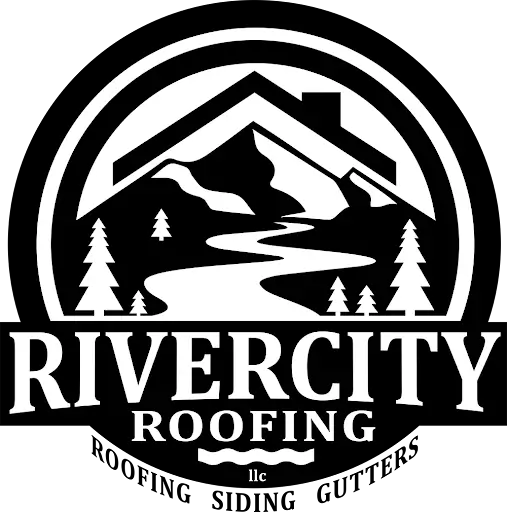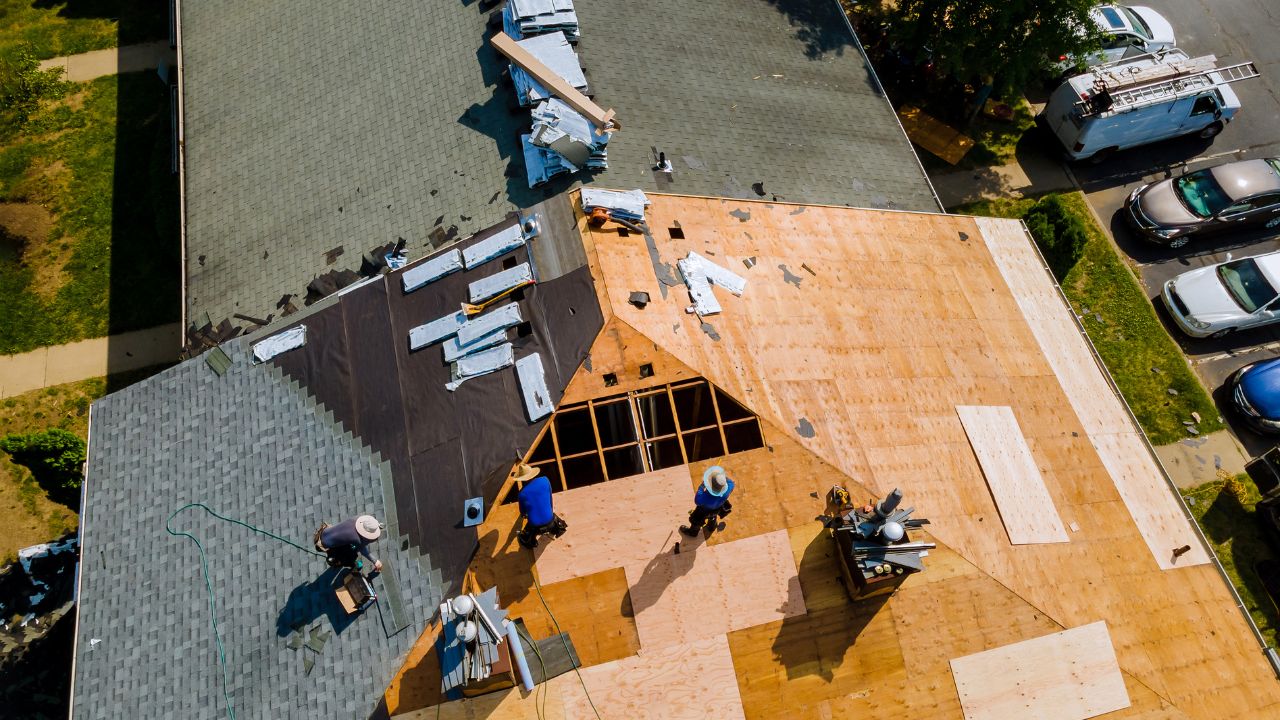Replacing a roof is among the biggest expenses that a homeowner will come across, especially in a state like Colorado with rough climatic conditions, at times alternating between hailstorms, and heavy snowfalls, which tend to affect roofs over time. Paying attention to costs of roof replacement and being aware of the factors that influence those costs can assist homeowners to properly budget their finances so as to mitigate some of the strain of a heavily loaded roofing bill.
This guide aims to delve into the average cost of roof replacement in Colorado, while examining the key elements that affect these costs.
1. Average Cost of Roof Replacement in Colorado
The average cost of roof replacement in Colorado ranges between $7000 and $15000. The expenses associated with roofing (which can fluctuate significantly) depend on various factors: dimension and complexity of the roof, type of roofing material considered, labor costs and several other miscellaneous expenses. Homeowners can anticipate paying (on a per square foot basis) anywhere from $4.50 to $9 per square foot. However, this range can fluctuate significantly with certain factors influencing pricing. Although most homeowners are aware of these costs, they might not fully grasp the implications of such variations. Because of this, it’s essential to conduct thorough research before making a decision.
To give a more detailed estimate, here’s a breakdown of typical roof replacement costs based on house size:
1,000 sq. ft. roof: $4,500 – $9,000
1,500 sq. ft. roof: $6,750 – $13,500
2,000 sq. ft. roof: $9,000 – $18,000
2,500 sq. ft. roof: $11,250 – $22,500
These numbers give readers a rough idea of the price, but one’s total bill for a new roof depends on several different factors.
Free Roof Inspections. Fast. Reliable.
Is your roof ready to weather the storm? Dont risk property damage. Our free roof inspections provide expert analysis to identify potential issues before they become costly problems.
2. Key Factors Influencing Roof Replacement Costs
There are numerous factors that determine the cost of roof replacement at large. Let us now delve into these factors in order to figure out why prices are changing continuously.
a. Roof Size
When it comes to roofing projects, the size of the roof plays an important role as far as cost is concerned. Many of the roofing contractors set their service prices according to the amount of materials required to be used to fix the new roof. However, the fact remains that the greater the size of the roof, the higher will be the cost of materials and manpower required to do the job, which leads to the overall costs.
It is relatively common to measure roofs in squares, where one square equals 100 square feet. Therefore, if your roof size is 2000 square feet, then it is classified as twenty squares. This particular measurement is especially beneficial for the homeowners as many roofing materials as well as services are calculated according to the square.
b. Roofing Material
The selection of materials for your new roof represents a significant cost consideration. Various roofing options exhibit diverse price ranges, longevity and resilience; this variability influences not only the initial expense but also the life expectancy of your roof. Although many homeowners prefer certain materials, it is essential to evaluate them carefully. For instance, some materials might be more expensive upfront, however, they could offer better durability over time. Because of this, it’s crucial to weigh all factors before making a decision.
- Asphalt Shingles:
- Price: $3.50 – $5.50 per square foot
- Life Expectancy: 20-30 years
- Asphalt shingles (the most prevalent roofing material in the U.S.) are favored primarily because of their cost-effectiveness and decent durability. In Colorado, however, these shingles are a particularly popular option (for homeowners) because they can endure a range of weather conditions. Although they are widely used, some may question their long-term performance. This consideration is important, but many find them suitable for their roofing needs.
- Metal Roofing:
- Price: $7 – $14 per square foot
- Life Expectancy: 40-70 years
- Metal roofs (which are recognized for their durability) and energy efficiency stand out in Colorado’s extreme weather conditions. They excel, particularly in regions susceptible to snow and hail. However, although the initial investment may be greater, metal roofs tend to outlast asphalt shingles by a considerable margin – this makes them a wise choice for long-term benefits.
- Clay or Concrete Tiles:
- Price: $10 – $18 per square foot
- Life Expectancy: 50+ years
- Tile roofing (known for its durability) is quite heavy; this necessitates additional structural support. It is less common in Colorado than in areas with warmer climates, however, it can serve as a suitable option for homeowners (seeking both longevity and a distinctive aesthetic). Although many may overlook it, clay or concrete tile roofing offers unique benefits because of its longevity.
- Wood Shingles or Shakes:
- Pricet: $6 – $10 per square foot
- Life Expectancy: 25-40 years
- Wood shingles and shakes present a natural, rustic aesthetic; however, they may not be suitable for all climates found in Colorado. They necessitate greater upkeep and exhibit reduced fire resistance unless treated appropriately.
- Synthetic roofing materials
- Price: $8 – $12 per square foot
- Life Expectancy: 40-50 years
- Synthetic roofing materials (such as slate, rubber, or composite) may resemble that of a slate or wood, but they do not come with the same price or maintenance tag. They are long-wearing and compared to other materials, are not too heavy; this makes them suitable for homes especially where the area experiences extreme weather conditions. This consideration is crucial because different environments demand varying levels of durability and maintenance. Although appealing, wooden options come with their own set of challenges.
c. Roof Complexity (Pitch, Slope, and Design)
The intricacy of a roof’s design can profoundly influence its overall cost. While a simple, flat roof (which is easier and quicker to replace) is significantly less expensive than one characterized by a steep pitch, numerous valleys, dormers, or skylights, complex designs necessitate greater amounts of labor and materials. Consequently, this complexity elevates the overall expense.
Flat roofs are typically less costly to replace due to their straightforward construction. However, in Colorado, the prevalence of flat roofs in residential neighborhoods is lower because they are more susceptible to drainage challenges, particularly during heavy snowfall. Conversely, steep roofs present a greater degree of difficulty and danger during replacement, which results in increased labor costs. Unique designs – incorporating elements such as chimneys, skylights and dormers – further complicate the replacement process, as roofers must navigate around these features and guarantee proper sealing to avert leaks.
d. Labor Costs
Labor expenses fluctuate significantly depending on geographical location; urban regions generally experience elevated labor rates when compared with their rural counterparts. In Colorado, these labor costs can be affected by various factors: the local cost of living, the expertise of the roofing crew and the demand for roofing services (this is particularly true following severe weather occurrences).
In areas such as Denver, Boulder and Colorado Springs, labor expenses tend to be more pronounced, however, this is largely attributable to the competitive housing market and the high frequency of roofing projects. Conversely, in more rural settings, although labor may be less costly, availability can often be constrained.
e. Roof Accessibility
If your roof (for instance) proves challenging to access – perhaps due to the considerable height of the home or obstacles such as large trees – the overall cost of the project may rise significantly. Roofers may need specialized equipment, which naturally increases labor expenses. Furthermore, roofs that are difficult to reach often necessitate additional time for completion, because this can complicate the entire process.
f. Building Permits and Codes
In the state of Colorado, homeowners must secure a building permit for roof replacement undertakings. The expense associated with the permit fluctuates by location; it can range anywhere from $200 to $500. Local building codes may also impact the overall cost – particularly in regions where certain materials or installation techniques are mandated due to fire risks, wind resistance, or snow loads.
Before embarking on a roof replacement, it is imperative to consult with your local city (or county) building department to grasp the requisite permits and compliance stipulations.
g. Removal of Old Roofing
The cost involved in the removal of existing roofing materials can contribute significantly to the total expenditure. Most roofing contractors incorporate this service in their estimates; however, it is vital to verify this detail. If your old roof comprises multiple layers of shingles, the removal process will be increasingly labor-intensive, thereby elevating the cost.
On average, the expense of removing an old roof varies between $1 and $5 per square foot, which depends on the type and number of layers of materials being taken away.
h. Weather and Seasonal Factors
Seasonal variation as well as weather conditions are determinants of the cost of roof replacement in Colorado. The seasonality of the project (laid down by extreme climate; short and long wet spell; weathers) may also pose problems, pointing at probable delays to any roofing project. While most roofing companies may be willing to give out special offers during the offseason, which is during winter beginning from late fall, it is important to weigh the factors involving bad weather when it comes to roofing replacement.
i. Warranty and Insurance
Roofing companies offer guarantees across the material and work that they do in case something goes wrong. These warranties often differ in terms of duration and may range from 10 years, a certain number of years or even a lifetime, depending on the material used and the contractor’s terms. While a more extensive or inclusive warranty may elevate the initial cost, this additional expense can ultimately offer peace of mind and result in savings on future repairs.
In addition, if your roof needs replacement due to storm destruction, your house insurance policy will pay the costs partly or fully. As a result, one should approach the insurance firm to determine his status and what it takes for a claim to be honored.
3. Regional Considerations in Colorado
The expense associated with roof replacement in Colorado can differ significantly depending on the region. There are several specific factors to take into account based on geographical location (this is crucial). However, one must also consider the quality of materials, labor costs and local regulations, which can all influence the final price. Although these elements play a vital role, the overall market dynamics also impact the costs. Because of this, it is essential to conduct thorough research before making a decision.
a. Mountainous Areas
Houses situated in mountainous regions (such as Aspen, Vail, or Breckenridge) encounter distinct challenges because of the significant snowfall and harsh cold. Roofs in these locales must be capable of supporting substantial snow loads; this can influence not only the materials selected but also the overall installation expenses. Metal and slate roofs are favored in these environments due to their durability and resistance to snow and ice damage which make them ideal choices, although they may come at a higher cost.
b. Denver and Front Range
Within the Denver metropolitan area (and stretching along the Front Range), the housing market remains quite competitive; furthermore, the cost of living is notably elevated. This can drive up both material and labor costs. However, roofing contractors are widely accessible, but the flat terrain simplifies roof replacements, making them relatively uncomplicated. Although challenges exist, the overall conditions support a thriving industry.
c. Rural Colorado
In the more rural regions of Colorado (for instance, the eastern plains or the southwestern areas), the costs associated with roof replacement can be lower. This is primarily because of reduced demand and lower labor rates. However, one must consider that the availability of specialized materials – and experienced contractors – may be limited. Consequently, this limitation could lead to longer project timelines, which is essential to keep in mind.
4. Tips for Saving on Roof Replacement Costs
Roof replacement is no doubt a costly project to attempt; nevertheless, there are options to control expenditures without compromising on quality:
Request for More than One Estimate: Request for More than One Estimate: The moment you find yourself with a roofing contractor, do not immediately sign with them. Roofing contractors usually charge their customers per project or per square footage area, therefore ensure you get estimates of the roofing charges from at least three different contractors so that you can make comparisons of the charges offered, the kinds of services which are to be offered by the particular roofing contractors and the warranties offered by them.
Think about the Timing: Roofing companies might be cost-effective in the wet season when business is not at its peak. Therefore, it may be less expensive to have your roof redone during late fall or early winter.
Use Long-Lasting Materials: Some materials tend to be more expensive at first. However, purchasing good quality roofing materials such as tiles or metals which will last for many years reduces costs incurred in the long run due to repairs and replacement.
Check for Rebates and Incentives: In some areas it is possible to get rebates or incentives for installing an energy efficient roofing system. Call your local power company or agency to find out if you are eligible.
Insurance Cover: Replacement of roofing materials due to destruction caused by hail, wind or other such problems that fall within the inclement weather may be reimbursed by the homeowners insurance policy. Make sure to take notes and notify them about the destruction as quickly as possible.
Conclusion
In conclusion, the expenses associated with replacing a roof in Colorado can fluctuate considerably due to various factors: the dimensions and intricacy of the roof, the selected materials and the property’s geographical location (among others). By comprehending these essential elements and preparing accordingly, homeowners can guarantee that they receive optimal value for their investment, all while safeguarding their residence against Colorado’s frequently severe weather conditions.
Roof replacement represents a considerable financial commitment; however, with an appropriate contractor, suitable materials and strategic timing, one can arrive at a decision that not only bolsters the safety and longevity of their home but also enhances its overall value for many years ahead.
Do you perhaps need a roof replacement? We at River City Roofing are able to offer the highest quality of roofing services as well as a reasonable price for all our services throughout Colorado. The average expense of roof replacement falls between $7,000 and $15,000; however, with the help of our team, we will help you identify the best solution that suits your pocket and protects your home.
So if you are facing storm damage or general wear and tear, or you simply need a new roof due to normal deterioration, reach out to us today for a free, no-obligation estimate. This way, we can ensure that your roof replacement is both stress-free and affordable! Call now to arrange your consultation.



